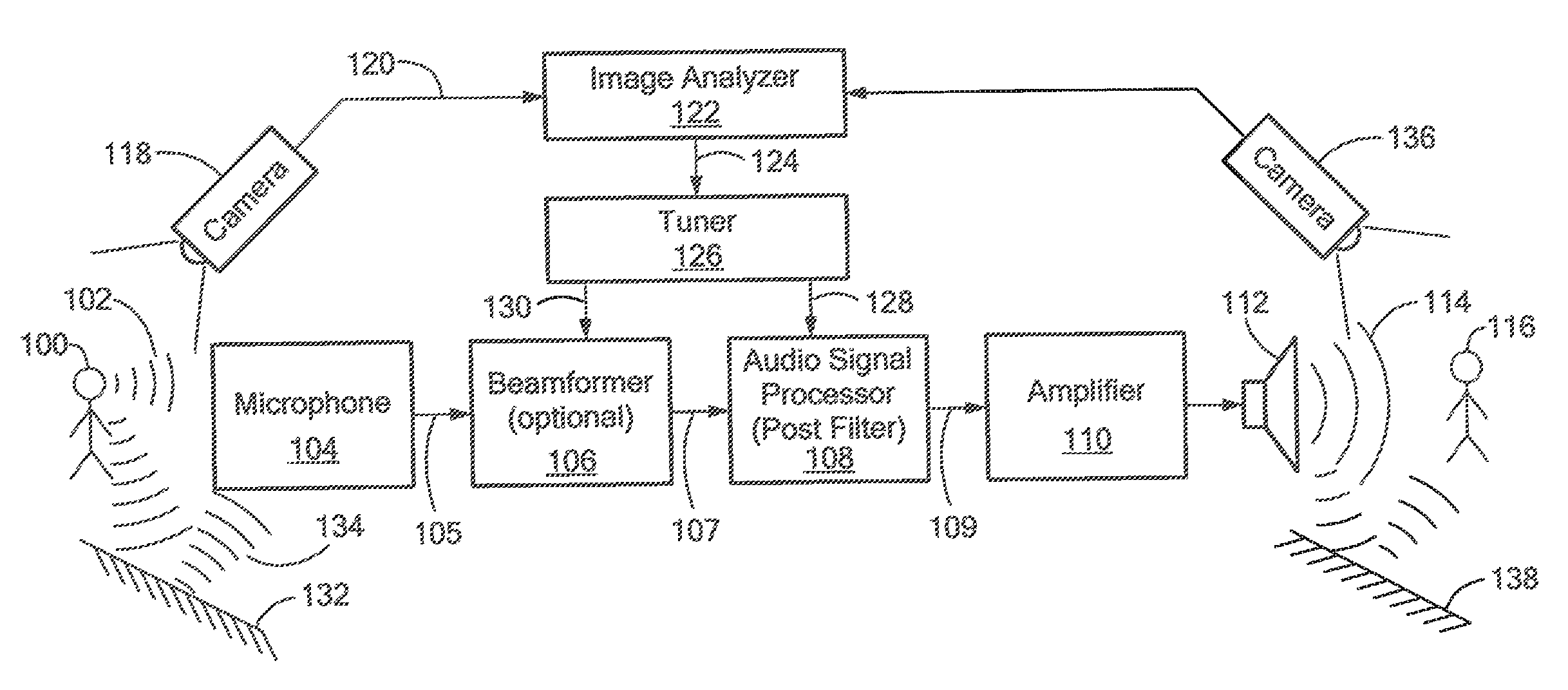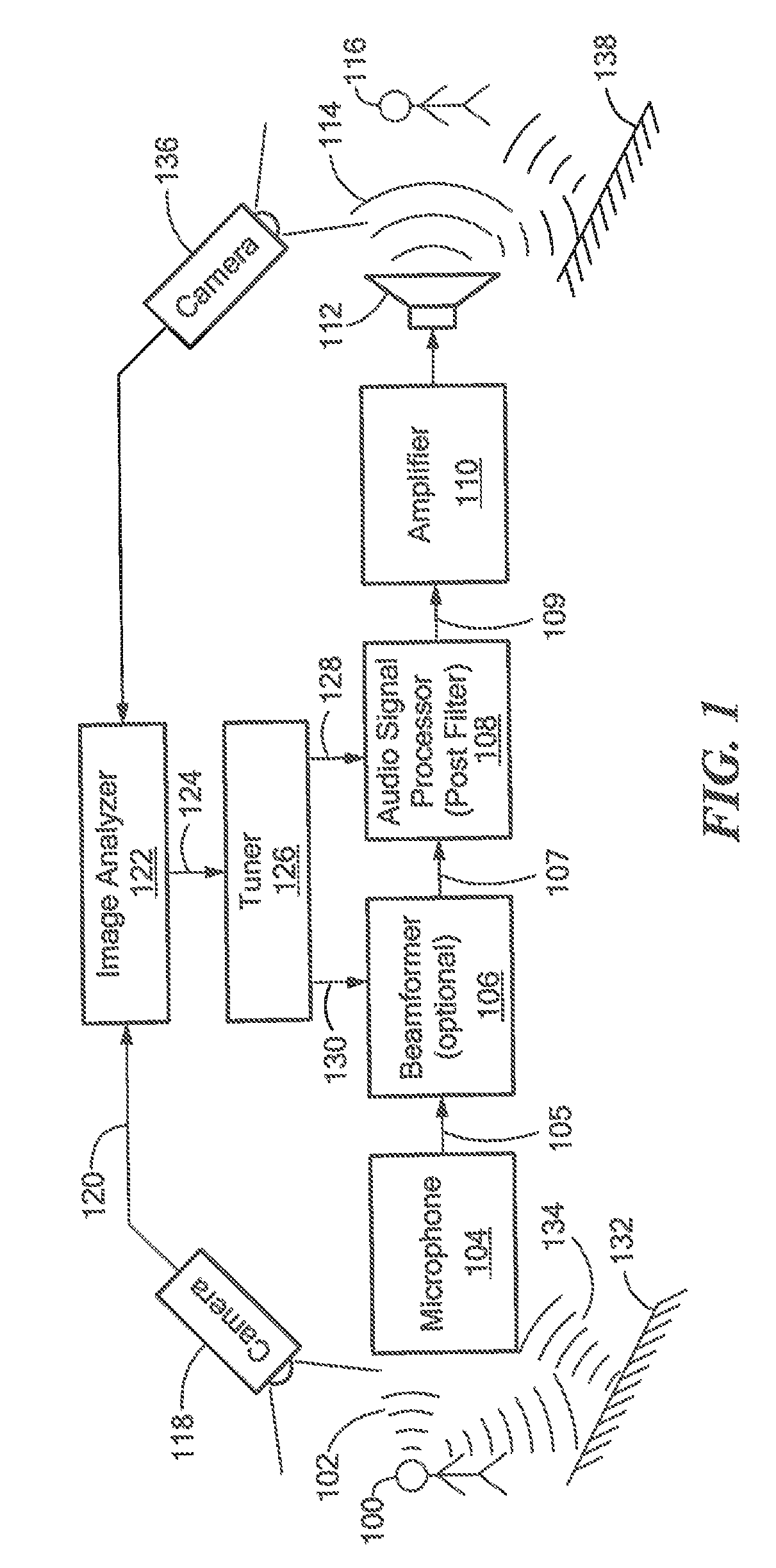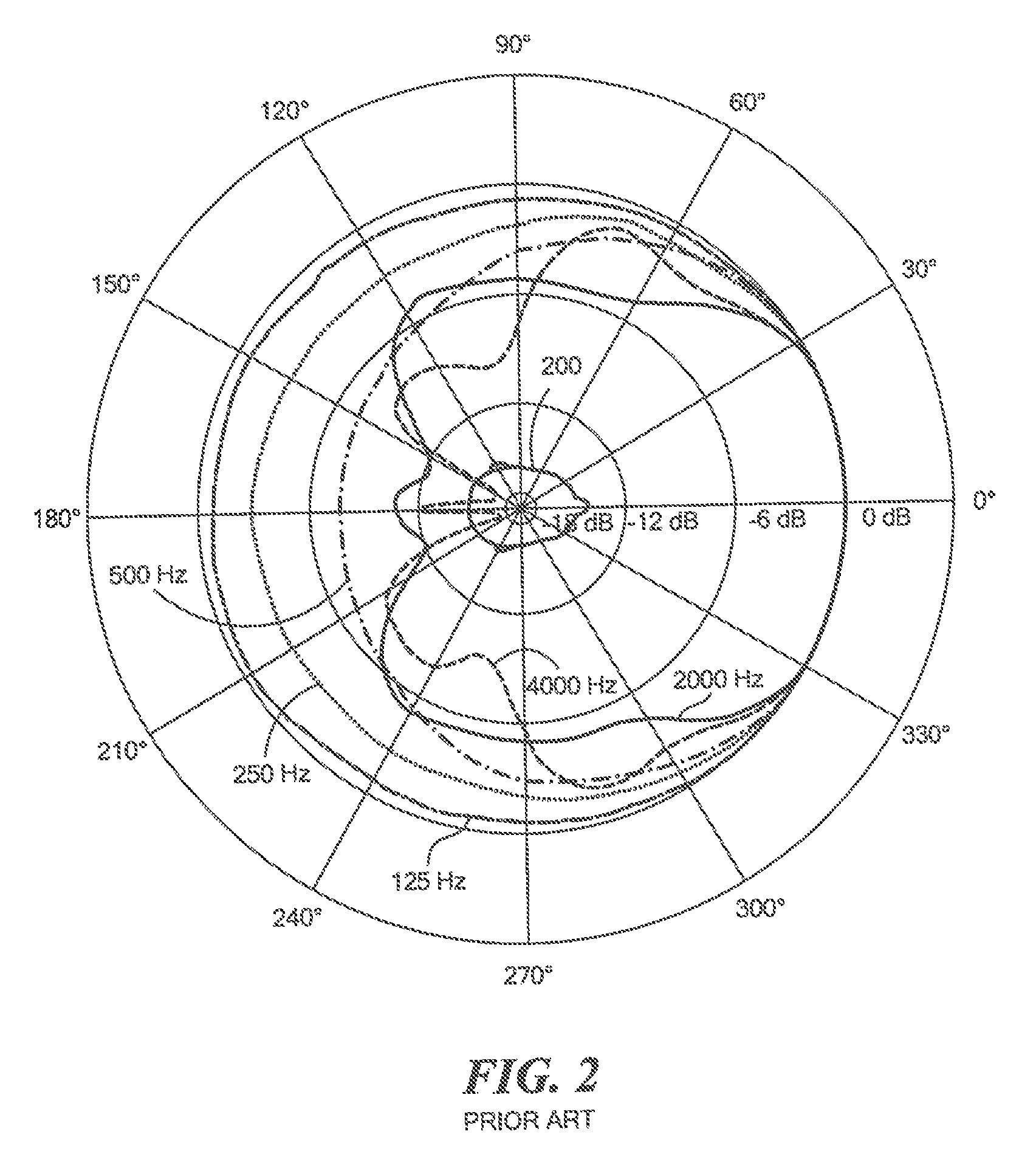Speech signal enhancement using visual information
a visual information and speech signal technology, applied in image enhancement, two-way working systems, instruments, etc., can solve problems such as interference with speech understanding, affecting the performance of entertainment, game and other systems that recognize or respond to voice commands, and introducing noise into audio streams, so as to reduce the volume of the loudspeaker, reduce the processing of the audio signal processor, and reduce the amplitude of the loudspeaker
- Summary
- Abstract
- Description
- Claims
- Application Information
AI Technical Summary
Benefits of technology
Problems solved by technology
Method used
Image
Examples
Embodiment Construction
[0015]An embodiment of the present invention provides an audio system for use by a speaker. The system includes a microphone configured to detect speech uttered by the speaker. The microphone is configured to generate corresponding audio signals. The system also includes an audio signal processor, other than a beamformer. The audio signal processor is coupled to the microphone to receive the audio signals generated by the microphone. The audio signal processor is also configured to process the received audio signals.
[0016]A camera is oriented at least partially toward the microphone. The camera is configured to generate a scene image. An image analyzer is coupled to the camera. The image analyzer is configured to automatically analyze the scene image, so as to estimate a distance between the speaker and the microphone.
[0017]A tuner is coupled to the image analyzer and to the audio signal processor. The tuner is configured to automatically alter an operating parameter of the audio si...
PUM
 Login to View More
Login to View More Abstract
Description
Claims
Application Information
 Login to View More
Login to View More - R&D
- Intellectual Property
- Life Sciences
- Materials
- Tech Scout
- Unparalleled Data Quality
- Higher Quality Content
- 60% Fewer Hallucinations
Browse by: Latest US Patents, China's latest patents, Technical Efficacy Thesaurus, Application Domain, Technology Topic, Popular Technical Reports.
© 2025 PatSnap. All rights reserved.Legal|Privacy policy|Modern Slavery Act Transparency Statement|Sitemap|About US| Contact US: help@patsnap.com



